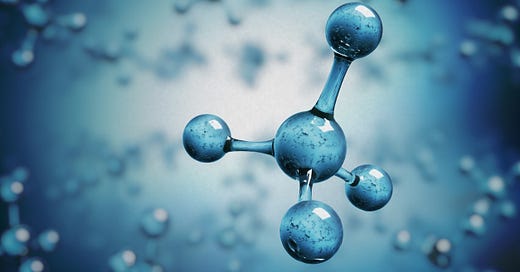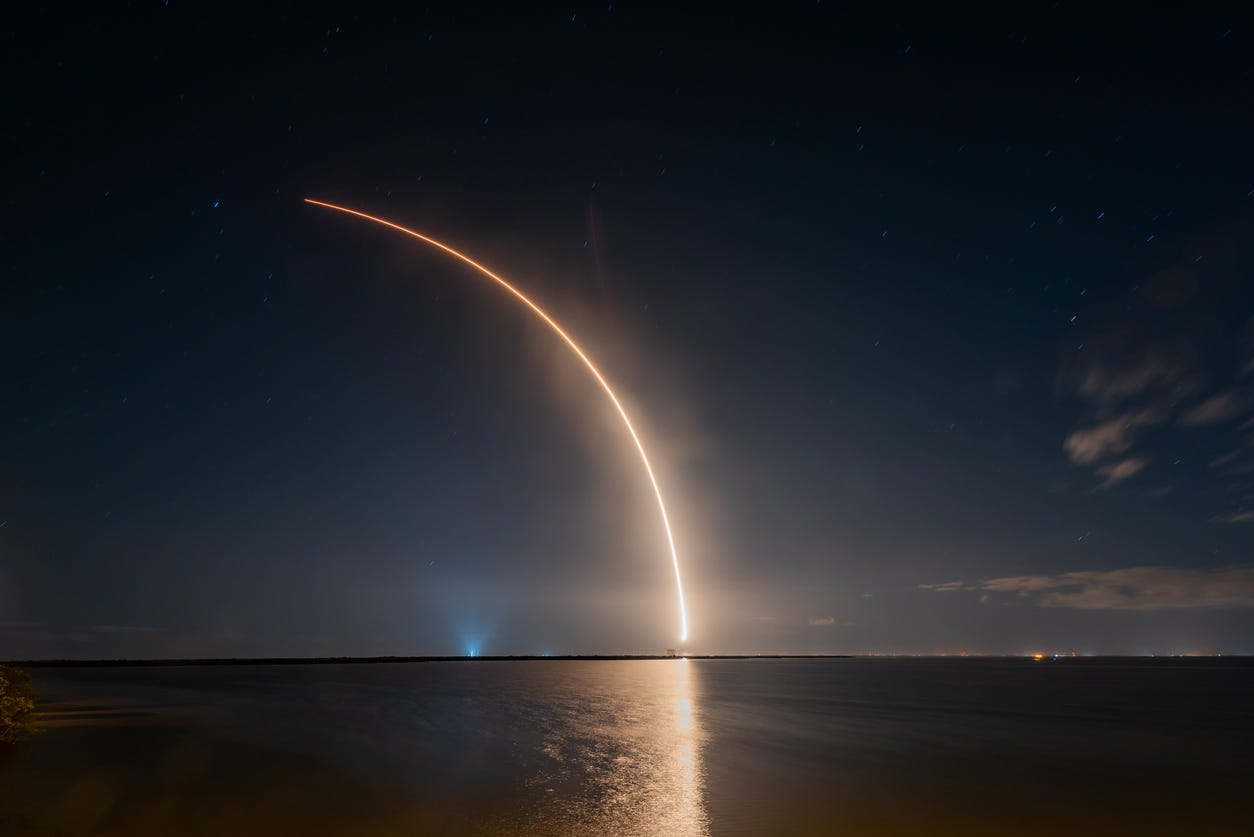What is the Best Rocket Fuel?
Rocket engines are run on Hydrogen, Kerosene and lately Methane. Is there a best fuel?
Modern rocket building companies such as SpaceX, Rocket Lab, Blue Origin and Isar Aerospace are almost exclusively opting for rocket fuels such as methane, natural gas or propane. Does that mean methane is the superior rocket fuel? And if that is the case, why has methane been entirely ignored in the rocket industry for close to 70 years? Was it not technologically feasible before, or were rocket companies in the past plain stupid or ignorant?
No, there is no perfect rocket fuel. Instead, we have numerous pros and cons to weigh against each other. The reason why fuels such as methane and propane have become so popular lately is because the industry is transitioning to reusable rockets. To better understand why that makes methane popular, it makes sense to start with the two fuels which still dominate the industry: Kerosene (RP-1) and Hydrogen. But before jumping into that discussion, we need to clarify some important terminology.
Understanding Rocket Fuel Terminology
When discussing rocket fuel you will hear about terms such as propellant, oxidizer, LOX, hydrolox, kerolox, methalox, monopropellant and bipropellant. What does it all mean?
Difference Between Propellant and Fuel
Rocket guys prefer to talk about propellant rather than fuel because a rocket unlike an airplane or car needs to bring its own oxygen stored in tanks. Propellant is a more practical term for rockets because it generalizes better across different types of rocket engines. All rockets use propellant, but not all propellant contains a fuel. A combination of fuel and oxygen is referred to as a bipropellant. If the propellant is only made up of one compound, we call it a monopropellant. You could make a simple rocket engine using a compressed air tank. Space rockets have something called reaction control system (RCS) which is usually composed of tiny rocket engines using monopropellants. These engines are used when you need very delicate and fine-grained control, such as docking with another spacecraft or adjusting orientation of your spacecraft while in orbit.
You will often see these engines referred to as cold thrusters. Hydrogen peroxide is another popular monopropellant because it decomposes easily into steam if brought into contact with a tungsten catalyst.
Fuel and Oxidizer
It is very common to use liquid oxygen, often shortened to LOX, as the oxidizer.
However, oxygen isn't the only oxidizer that exists. Hydrazine hydrate fuel, for instance, is combined with hydrogen peroxide. A reaction between a fuel such as methane and an oxidizer such as oxygen is called a redox reaction in chemistry. Redox is short for reduction-oxidization. I explain in more detail what exactly an oxidizer is in this article:
The oldest rockets known to man are made with black powder. Everybody has seen a black powder rocket during a new year celebration. These rockets don't actually use the oxygen in the atmosphere to burn their fuel. Blackpowder can actually be thought of as a bipropellant composed of charcoal (C), sulfur (S) and potassium nitrate (KNO₃). The potassium nitrate works as the oxidizer. If you are keen to learn more about how that works, read my article on gunpowder:
While nobody uses blackpowder for space rockets, it is actually still common to use solid bipropellant in space rockets. The side boosters on the Space Shuttle used them. They are also used in boosters for the SLS, Ariane 5, Vulcan Centaur, Atlas, and many others.
Because fuel and oxidizer can be combined in many different ways it is common to specify propellant by names such as:
Hydrolox – Short for LOX/Hydrogen. Remember, LOX is short for liquid oxygen
Kerolox – Short for LOX/RP-1 propellant
Methalox – Short for LOX/Methane propellant
Now that you know the basic terminology, let us compare different rocket fuels!
Kerosene vs. Hydrogen Rocket Fuel
When picking liquid rocket fuel, the two opposite choices have been a refined form of Kerosene called RP-1 and liquid Hydrogen. RP-1 gives maximum thrust, while Hydrogen gives maximum fuel efficiency. On a rocket engine, unlike a car we don't talk about gas milage but specific impulse (Isp). An engine with a high specific impulse will deplete its propellant more slowly while maintaining a specific amount of thrust.
Let me give an example: The Merlin 1D engine on the Falcon 9 rocket delivers 854 kilo Newtons of thrust. For my American readers, that is 190,000 pounds of thrust. A Merlin engine with an Isp of only 200 would empty its propellant tanks twice as fast as a Merlin engine with 400 of Isp. The actual Merlin 1D engine has a specific impulse of 282 seconds at sea level.
I cover rocket engine metrics like thrust, TWR and Isp in more detail in the following article:
If we compare the hydrolox Vulcain 2.1 used in Ariane 6 with the Merlin kerolox engine on Falcon 9 we see some stark differences. In the vacuum of outer space, the Vulcain 2.1 engine has an Isp of 432 seconds, while the Merlin 1D has 311 seconds of Isp in vacuum. In other words, the Vulcain engine is over 50 percent as fuel efficient. The exact numbers will vary between engines, but in general, you cannot get this high Isp numbers for a kerolox engine.
On the other hand, kerosene is 18 times denser than hydrogen, which means more fuel can get pumped through the turbo-pump and into the combustion chamber every second. That translates into lots of thrust, but it also means you burn up the fuel faster. Hydrogen gives more energy relative to weight, so you can keep going for longer. In other words, it gives better fuel efficiency.
For this reason, first stage rocket engines, which need to escape the gravity of a planet, are better off using big high trust rocket engines with kerosene. The upper stages being used in outer space can be made smaller and use hydrogen for higher efficiency.
If you look at a long exposure picture of a rocket launch, you will see how rockets don't move straight up, but perform what we call a "gravity turn". High thrust is primarily needed in the part of the rocket trajectory which is mostly vertical. When the rocket is going mostly horizontally, fuel efficiency starts to matter more.
Another issue with hydrogen is that it is a highly problematic fuel. If we used it in the first stage, it would make the rocket enormous because the fuel tanks need to be so big. Furthermore, it needs to be cryogenically cooled and the bigger the tanks are the thicker the walls have to be, making everything heavier. This makes hydrogen a poor choice for the first stage of a rocket.
Then why does the core stage of the Ariane rocket, Space Shuttle and SLS use hydrogen engines? They can pull this off because they use solid propellant strap-on boosters, which give an extra kick. These boosters don't have a good Isp, but they have superb thrust.
Why Methane is Well Suited for Reusable Rockets
Methane is a fuel which is in between kerosene and hydrogen: More efficient than kerosene, but not as dense. Thus, methane is not a better fuel for the first stage than kerosene and not better in later stages than hydrogen.
But here is the kicker: It is a great fuel for reusable rockets. Unlike kerosene, methane burns cleanly, not leaving lots of nasty soot in the rocket engine which needs to be cleaned out. That means engines that will last longer and require less maintenance. Hence, methane was not that interesting in the past, since nobody pursued reusable rockets.
What I just told you is the short version. In reality, if you analyze fuel choices in more detail, you will find that methane has quite a long list of other advantages.
Much easier handling than hydrogen. Don't need active cooling, passive cooling is sufficient.
Don't need sophisticated metallurgy like hydrogen to avoid hydrogen embrittlement of metals getting in touch with the hydrogen.
Tanks can be much lighter since pressure is lower and less insulation is needed. Since you got less to lift, they end up equally efficient as rockets using hydrogen.
Better for reuse than kerosene due to clean burning, avoid wearing out engines (coking).
Easy to synthesize on Mars. Which is important for Elon Musk if he wants to return from Mars.
Methane turbo-pumps are simpler than those for hydrogen, and turbo-pumps are a big part of the complexity of a rocket engine.
Methane can be vaporized to pressure the tank, so you don't have to use helium to pressurize the tank as it gets drained like RP-1.
Liquid methane has very similar temperature to liquid oxygen, which means propellant tanks can be next to each other without thick insulation.
The last part requires some elaboration. Liquid hydrogen is so cold that unless you insulate it well from the oxygen tanks, it will freeze the oxygen solid. Or alternatively, the liquid oxygen is so warm compared to hydrogen that it will make the hydrogen boil. Insulating the two tanks adds complexity and mass, which is avoided by picking methane as the fuel.
Combining kerosene and hydrogen in a rocket may look optimal at first glance, but suffers from doing a local and isolated design optimization instead of engaging in whole system thinking. The efficiency gains from using a hydrogen engine will get eaten up by heavier tanks and an overall more complex system. Having multiple propellant and engine types adds cost and complexity. That is why the Falcon 9 rocket from SpaceX uses kerolox propellant for all stages. While not optimal, it is a lot cheaper. The most notable downside is in sending payloads into higher orbits. However, SpaceX can outcompete current hydrogen rockets, such as Ariane, on price by simply building a much larger and cheaper rocket, such as the Falcon Heavy.
I hope this gives you an idea of why Methane is such a great fuel choice. Better fuel efficiency than kerosene allows you to reach higher orbits with similar sized rockets. The thrust at the booster stage will not be so much lower than kerosene that you need solid fuel boosters strapped on like SLS, Ariane and other "old space" rockets.







